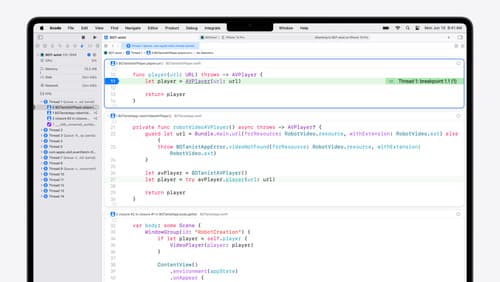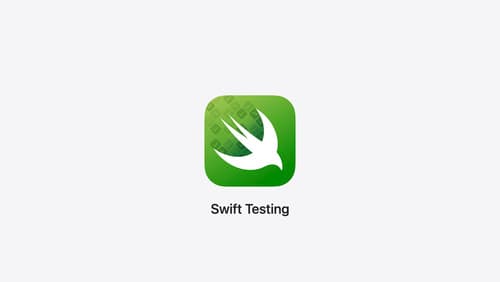how do I start doing testing?
Asked on 2024-08-02
1 search
To start doing testing in Swift, you can follow these steps:
-
Add a Test Bundle Target:
- In Xcode, choose
File > New > Target. - Search for
Unit Testing Bundlein the test section. - Swift testing is the default choice for this template in Xcode 16.
- Choose a name for your new target and click
Finish.
- In Xcode, choose
-
Write Your First Test:
- Import the testing module in your test file.
- Write a global function and add the
@testattribute to it. This attribute indicates that the function is a test. - Xcode will recognize it and show a run button alongside it.
- Test functions are ordinary Swift functions with the
@testattribute. They can be global functions or methods in a type and can be markedasyncorthrowsif needed. - Fill out the body of the function to validate something, such as checking the metadata for a video file.
For a more detailed guide, you can refer to the session Meet Swift Testing which covers the building blocks of Swift testing.
- Running Tests:
- To run all tests in your project, use the shortcut
Command + U. - To run a specific test, click on the diamond next to the test function or anywhere up the hierarchy to run a collection of tests.
- To run all tests in your project, use the shortcut
For more techniques on working efficiently with tests, you can check out the session Xcode essentials.
- Using Test Plans:
- Edit the test plan from the
Product > Test Planmenu. - Choose which targets to include, such as both unit tests and UI tests.
- Select which tests from those targets to include in the test plan.
- Add the test plan to multiple schemes if needed.
- To run your test plan, select it from
Product > Test Plan, then chooseProduct > Testor useCommand + U.
- Edit the test plan from the
For more information on test plans, refer to the session Xcode essentials.
- Advanced Testing Techniques:
- Swift testing supports parallel testing by default, which can reduce execution time and provide faster results.
- You can also use tags to organize and selectively run tests across your test suite.
For advanced testing techniques, you can watch the session Go further with Swift Testing.
Relevant Sessions:
These sessions will provide you with a comprehensive understanding of how to start and efficiently manage testing in Swift.

What’s new in Xcode 16
Discover the latest productivity and performance improvements in Xcode 16. Learn about enhancements to code completion, diagnostics, and Xcode Previews. Find out more about updates in builds and explore improvements in debugging and Instruments.

Platforms State of the Union
Discover the newest advancements on Apple platforms.

Meet Swift Testing
Introducing Swift Testing: a new package for testing your code using Swift. Explore the building blocks of its powerful new API, discover how it can be applied in common testing workflows, and learn how it relates to XCTest and open source Swift.
